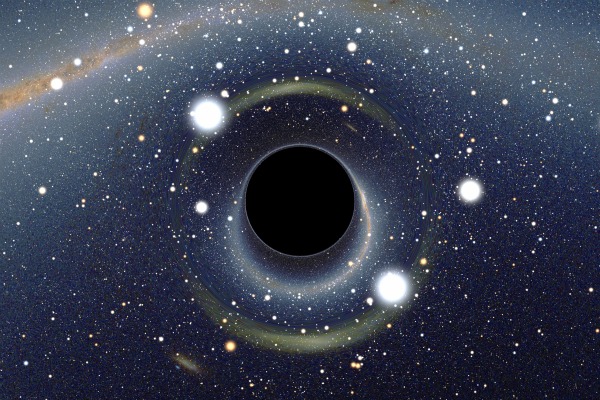<em>This article was originally published at The Conversation. The publication contributed the article to Space.com’s Expert Voices: Op-Ed & Insights.
A clever mathematical tool known as virtual particles unlocks the strange and mysterious inner workings of subatomic particles. What happens to these particles within atoms would stay unexplained without this tool. The calculations using virtual particles predict the bizarre behavior of subatomic particles with such uncanny accuracy that some scientists think “they must really exist.”
Virtual particles are not real – it says so right in their name – but if you want to understand how real particles interact with each other, they are unavoidable. They are essential tools to describe three of the forces found in nature: electromagnetism, and the strong and weak nuclear forces.
Real particles are lumps of energy that can be “seen” or detected by appropriate instruments; this feature is what makes them observable, or real. Virtual particles, on the other hand, are a sophisticated mathematical tool and cannot be seen. Physicist Richard Feynman invented them to describe the interactions between real particles.
But many physicists are not convinced by this cut-and-dried distinction. Although researchers can’t detect these virtual particles, as tools of calculation they predict many subtle effects that ultrasensitive experiments have confirmed to a mind-boggling 12 decimal places. That precision is like measuring the distance between the North and South poles to better than the width of a single hair.
This level of agreement between measurements and calculations makes virtual particles the most thoroughly vetted idea in science. It forces some physicists to ask: Can a mathematical tool become real?

Virtual particles are the tool that physicists use to calculate how forces work in the microscopic subatomic world. The forces are real because they can be measured.
But instead of trying to calculate the forces directly, physicists use a bookkeeping system where short-lived virtual particles carry the force. Not only do virtual particles make the calculations more manageable, they also resolve a long-standing problem in physics: How does a force act across empty space?
Virtual particles exploit the natural fuzziness of the subatomic world, where if these ephemeral particles live briefly enough, they can also briefly borrow their energy from empty space. The haziness of the energy balance hides this brief imbalance, which allows the virtual particles to influence the real world.
One big advantage of this tool is that the mathematical operations describing the forces between particles can be visualized as diagrams. They tend to look like stick-figure cartoons of particle pingpong played with virtual particles. The diagrams – dubbed Feynman diagrams – offer an excellent intuitive framework, but they also give virtual particles an aura of reality that is deceiving.
Amazingly, this virtual particle-based method for calculation produces some of the most precise predictions in all of science.

Reality check
All matter is made of basic building blocks called atoms. Atoms, in turn, are made of small positively charged particles called protons found at their core, surrounded by even smaller negatively charged particles called electrons.
As a professor of physics and astronomy at Mississippi State University, I perform experiments that often rely on the idea that the electrons and protons seen in our instruments interact by swapping virtual particles. My colleagues and I have recently measured the size of the proton very precisely, by bombarding hydrogen atoms with a beam of electrons. This measurement assumes that the electrons can “feel” the proton at the center of the hydrogen atom by exchanging virtual photons: particles of electromagnetic energy.
Physicists use virtual particles to calculate how two electrons repel each other, with exquisite precision. The forces involved are represented as the accumulated effect of the two electrons trading virtual photons.
When two metal plates are placed extremely close together in a vacuum, they attract each other: This is known as the Casimir effect. Physicists can accurately calculate the force that pulls the plates together using virtual particle mathematics. Whether the virtual particles are really there or not, the math predicts exactly what researchers observe in the real world.
Yet another mysterious prediction made using the virtual particle tool kit is so-called Hawking radiation. When virtual particle pairs pop into existence at the edge of black holes, sometimes the black hole’s gravity grabs one partner while the other escapes. This rift causes the black hole to slowly evaporate. Although Hawking radiation has not yet been directly observed, researchers have recently observed it indirectly.

Useful fiction
Let’s circle back to the question: Can a mathematical tool become real? If you can perfectly predict everything about a force by imagining it is carried by virtual particles, do these particles qualify as real? Does their fictional status matter?
Physicists remain divided on these questions. Some prefer to “just shut up and calculate” – one of Feynman’s famous quips. For now, virtual particles are our best way to describe how particles behave. But researchers are developing alternative methods that do not need them at all.
If successful, these approaches could make virtual particles vanish for good. Successful or not, the fact that alternatives exist at all suggests virtual particles might be useful fiction rather than physical truth. It also fits the pattern of previous revolutions in science – the example of ether comes to mind. Physicists invented ether as a medium through which light waves traveled. Experiments matched well with calculations using this tool, yet they could not actually detect it. Eventually, Einstein’s theory of relativity showed it was unnecessary.
Virtual particles are a striking paradox of modern physics. They shouldn’t exist, yet they are indispensable for calculating everything from the strength of magnets to the behavior of black holes. They represent a profound dilemma: Sometimes the best insights into reality come through carefully constructed illusion. In the end, confusion around virtual particles may be just the price of understanding fundamental forces.
This article is republished from The Conversation under a Creative Commons license. Read the original article.
